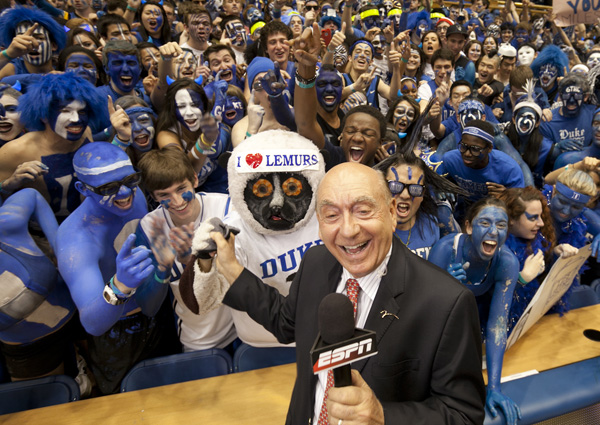By Nonie Arora
Look at the Lady Gaga photo, how shocking do you find it?
Many people find Lady Gaga’s outfits shocking. But they don’t always think so the fifth time they see the same outfit. According to a recent study, extra exposure to photographs of Lady Gaga changes how subjects predict others will react to seeing the image for the first time.
Troy Campbell, a marketing PhD student in Fuqua, conducted a study to determine whether people who are desensitized by repeated exposure to a shocking picture will be able to accurately predict how someone else will react. He conducted the research with Ed O’Brien at the University of Michigan and other social scientists at Duke University, the University of Michigan, and the University of Colorado. Their overall finding is that desensitized subjects don’t do as well at predicting others’ reactions.
A simple example of desensitization would be hearing the same joke five times. It gets less funny. Generally people believe that experience leads to predictive knowledge, so it’s interesting that that test subjects got worse at predicting how others would respond to the Lady Gaga photographs.
In follow-up studies, Campbell and colleagues found that more exposure to the same jokes made people worse at selecting a joke that unexposed audiences would find the funniest. According to Campbell, people generally understand that they and others desensitize at times, but they frequently fail to notice and correct for it in themselves and others, and that can lead to poor decisions.
“Desensitization can not only turn us into ‘fools’ who tell the wrong jokes but also ‘monsters’” Campbell says. In one study, the researchers exposed two groups of human subjects to a painful noise for 5 or 40 seconds and then asked how painful the last few seconds of the noise was. The people who heard the sound for longer found the last few seconds to be less painful. The subjects were also asked to predict how painful 5 seconds of the noise would be for a person who had never heard the sound. People who had heard the sound for longer said the next five seconds would be less painful. Now what is fascinating is that people exposed to the sound for 40 seconds reported that they would feel less guilty when exposing the noise to someone else. Presumably, this is because the group of people exposed to the noise for 40 seconds perceived less pain in the last few seconds because they became desensitized.
Campbell says it can be dangerous when people project their sensibilities on to other people.
Campbell and O’Brien are looking to continue this line of work by investigating whether people are forgetting their original response of how they felt when they first saw the Lady Gaga image. This is one way to consider the bigger question: “Are memories we’re not thinking about truly gone or can they be accessed completely or in a flawed way?” How about you, do you remember distinctly finding the Lady Gaga photograph less shocking a minute ago? Campbell and his colleagues want to know; leave a comment below and help them with their future research.
Before coming to Duke, Campbell studied psychology at UC Irvine where he was mentored by Elizabeth Loftus and Peter Ditto. He began his undergraduate studies focused on creative writing, but became more interested in psychology. He thinks that social science is exciting because it can test competing theories of conventional wisdom. Good ideas can come from day to day conversations, according to Campbell. Campbell also worked for a summer as a Disney Imagineer, which gave him the opportunity to improve visitors’ Disney experience. Now, Campbell is collaborating with Peter Ubel and Dan Ariely as he pursues his doctoral degree in marketing from Fuqua.



















